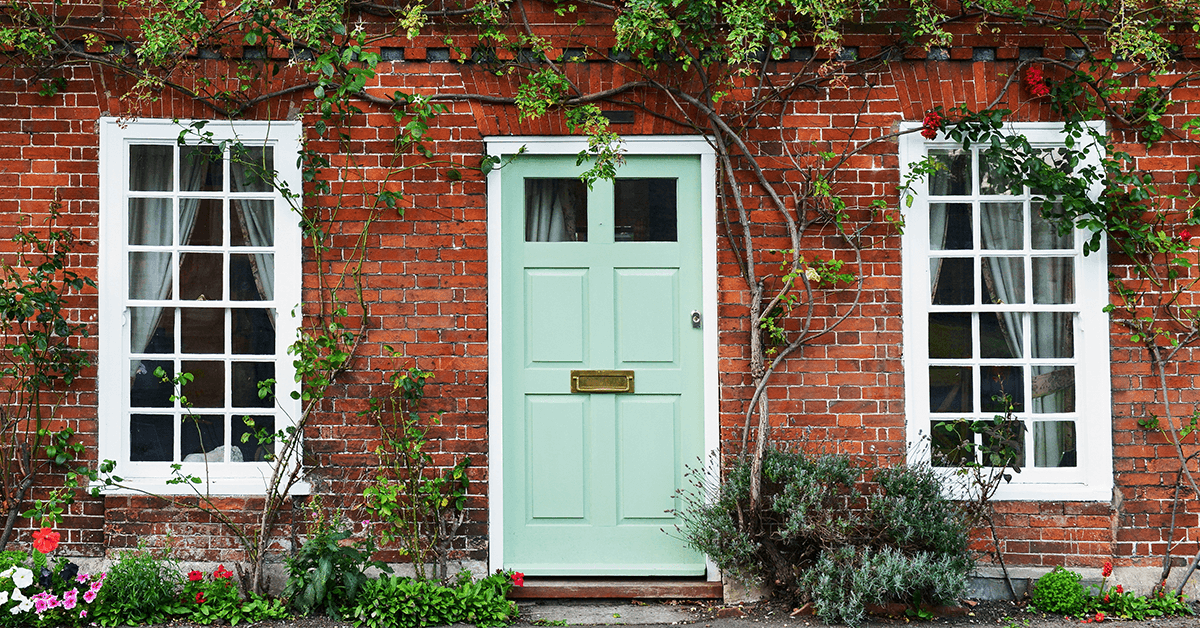Introduction
Have you noticed how small drops of water tend to enter through the doors, especially the ones to the bathrooms, balconies, and terraces? Even if they’re not visible to the naked eye, a lot of the time, such situations can lead to serious water leakage issues.
You must’ve heard many different myths and facts about waterproofing; it’s time to understand what’s really going on. We'll see what door waterproofing really is and if your home needs that layer of protection.
Understanding Door Waterproofing
What Is Door Waterproofing?
Have you ever wondered why there are sections of the wall near the balcony, bathroom, or terrace doors that show signs of water leakage? That might be because of a very simple reason: you do not have water-resistant doors.
As the name suggests, door waterproofing is basically just making sure that your doors are not vulnerable to water seepage. The thing is, if your doors fail to properly protect your home from moisture and water infiltration, they damage more than just themselves.
Common Causes Of Door Water Damage
- Rainy Season: As you’d expect, when it starts raining, your house is most likely to fall prey to water leakage problems. Without proper door waterproofing, heavy rain sneaks in through gaps, causing major damage over time.
- Humidity: Some areas of India, like Mumbai, are just naturally humid all year round. Without a water proof wooden door, you start to see signs of inconvenient and ugly swelling.
- Poor Sealing: Sometimes, you’re just unlucky – construction workers don’t pay close attention and end up leaving gaps in the door, leaving behind improper sealing which naturally allows water to penetrate.
Types Of Doors And Their Waterproofing Needs
Wooden Doors
Wooden doors are prone to suffering from swelling. You can see this in the form of bulges on the door that are not only an aesthetic problem but also a major functional one. This swelling on the doors forces them to close awkwardly, never fully recovering from the water damage.
All of this reinforces the idea that having a water proof wooden door is a necessity, not an option. So, how do you go about this type of door waterproofing? Go for scientific waterproofing.
- To start with, use high-quality sealants that are specifically made for wood.
- Apply varnish for extra protection.
- Use waterproof paint to add a layer of defence.
Metal Doors
While these generally make for more water-resistant doors than wood, metal doors are still very much plagued with their own set of problems. Corrosion and rusting are major issues faced by metal doors in homes. To have a waterproof door for home that’s made of metal, follow the tips shown below:
- Anti-Rust Coating: Be it your need to have a waterproof main door or a waterproof door for terrace, if it’s a metal door, it needs an anti-rust coating. To stop corrosion, simply apply a coat of this on your doors and see their lifespan get extended.
- Regular Maintenance: Regularly check for any signs of rust and take corrective measures as soon as possible because it does not take rust very long to cause significant damage.
Fiberglass Doors
Fiberglass doors are naturally good at resisting issues related to water. They might not have the appeal of wooden or metal doors, but when you are looking at options for a low-maintenance waterproof bathroom door, an option like this one is suitable.
As an added layer of protection, use epoxy resin to seal any cracks or gaps to ensure proper door waterproofing.
Waterproofing Methods And Techniques
- Sealants: Silicone and acrylic sealants are popular choices for door waterproofing. Given their degree of flexibility and strength, they make for suitable solutions to create water-resistant doors.
What you need to do here is, use a high-quality sealant like Berger Homeshield Crack Fill Paste to fill gaps and cracks in wooden and metal doors. - Paint and Varnish: This helps you to create water-resistant doors by giving your doors extra layers of protection. Paint and varnish also protect the doors from harsh rain and sun damage.
- Epoxy Coatings: When you want to waterproof toilet door, go for an epoxy coating. What it does is it basically creates hard, water-resistant doors that are largely immune to scratches and moisture.
- Door Waterproofing with Berger:
- WeatherCoat Long Life 10: Use it on doors that are exposed to prolonged periods of heavy rainfall. Its advanced polymer technology provides protection. Create a waterproof door for terrace or a waterproof main door with the help of WeatherCoat Long Life 10.
- Dampstop Advanced: This next option is made for the interiors where you struggle with high levels of humidity, like when you want to create a waterproof bathroom door. Dampstop Advanced blocks dampness and prevents the growth of harmful bacteria your house.
Step-By-Step Guide To Waterproofing Your Door
1. Preparation
Start by inspecting the door, followed by cleaning the surfaces. Watch out for dust build-up and any cracks to be filled up.
Next, gather all the raw materials you will need to hasten the process.
2. Application
Seal the edges by applying a bead of silicone sealant along the door's edges. Apply paint or varnish by using rollers or brushes for even application.
3. Maintenance
Do not forget to do regular check-ups and watch out for signs of damage or wear and tear. While this may be difficult, especially for the external doors, try to keep the doors clean and free of loose dust and dirt particles.
Conclusion
Explore Top Waterproofing Products
Visit our recommended product section to find the best waterproofing solutions for your doors. Make informed decisions with our expert reviews and tips, and to get updates on the latest trends in waterproofing.


